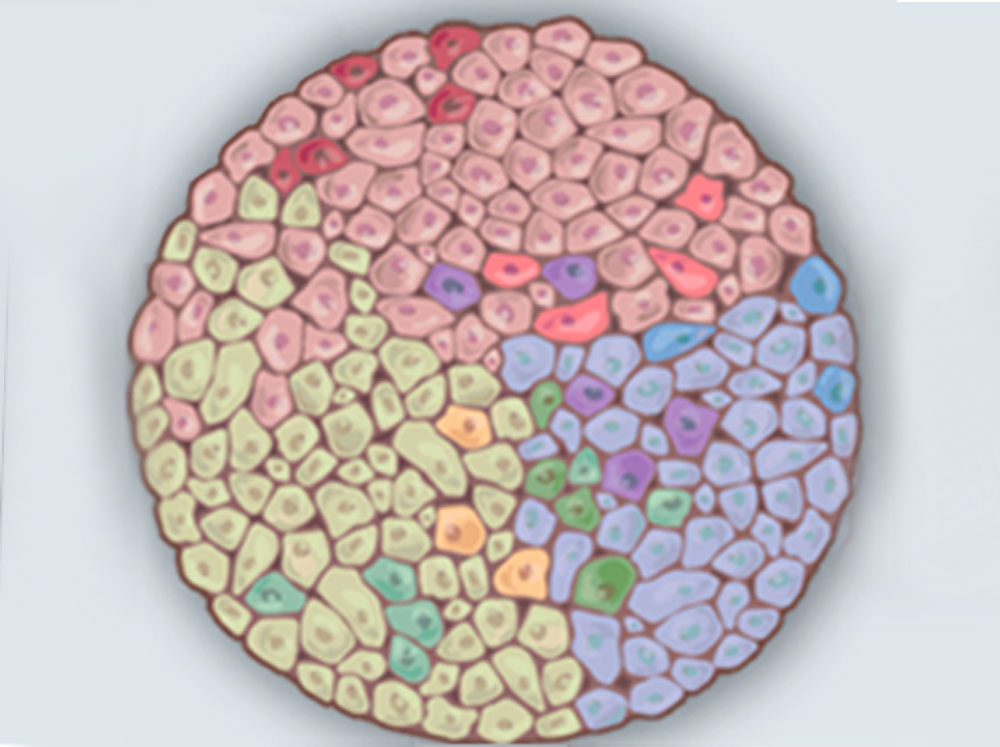Our work
New hope for cancer patients: tackling heterogeneity
Action Against Cancer is funding an innovative research project developing a combination of new tools and techniques for patients, to understand their secondary tumours before they even develop. This research is initially targeting breast cancer, and will greatly improve patient outcomes. At present it is hard to predict where cancer will reappear in the body as a secondary tumour, as it unfortunately does in many cases, and by that time it has often developed resistance to treatment. This is because of heterogeneity.
What is tumour heterogeneity?
A considerable challenge in cancer treatment is caused by heterogeneity i.e. the many ways in which different cells can vary from each other within a tumour (as shown in the image on the right). This can be in size, shape, the ability to grow, move and spread, as well as many other variants. The co-existence of sub-populations of cancer cells within one tumour leads to: treatments not working; a highly unpredictable risk of recurrence; and a negative impact on patient survival.
We are funding research at the Imperial Centre for Translational and Experimental Medicine, to develop a pre-clinical model of heterogeneity within breast tumours. It is envisaged that the findings will also be relevant to other cancers, to help patients with a variety of tumour types.
Research questions
- How does tumour heterogeneity affect tumour progression in breast cancer?
- Are genes commonly misregulated in breast cancer in certain subtypes important for tumour progression?
- How does tumour heterogeneity affect response to therapy?
Project activities
To answer these questions, the team will use newly developed technologies to create a model that allows them to examine breast cancer progression and treatment. They will: generate populations of cancer cells expressing different combinations of certain genes that are believed to drive tumours; examine heterogeneity at the single cell level; follow the interaction between clones and cancer progression.
Finally, this genetic analysis will be combined with imaging and mathematical approaches, to produce an in depth characterisation of the role of tumour heterogeneity in the regulation of cancer progression, invasion and response to therapy.
Aims and objectives
This original research aims to develop a new technique that will enable doctors to predict whether a tumour will spread, and if so where to, and most importantly what the best combination of drugs will be to prevent or to reduce relapse. This will be combined with a novel tool that will mimic the mutation of individual patient’s tumours, to allow analysis of the response to drugs and inform treatment adjustment on a personalised level. It is envisaged that this extremely promising research will be applicable to many types of cancer once developed, bringing hope to an enormous number of patients.
Project Spotlights:

